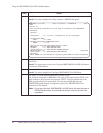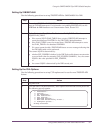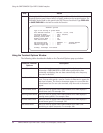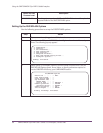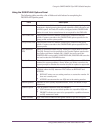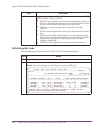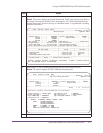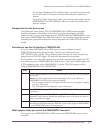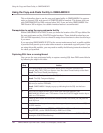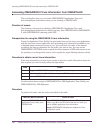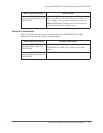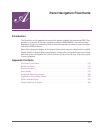
Moving Interactively between !DB/EXPLAIN and OMEGAMON II
102 OMEGAMON II for DB2 User’s Guide: CUA Interface, Version 540
Moving Interactively between !DB/EXPLAIN and OMEGAMON II
This unit tells you how to move interactively between OMEGAMON II for DB2 and
!DB/EXPLAIN using the copy-and-paste facility to review and EXPLAIN poorly
performing SQL. It also describes how you can use the full functionality of !DB/EXPLAIN.
What functions can you use?
When using OMEGAMON II and !DB/EXPLAIN together, you can use the following
OMEGAMON II for DB2 functions:
■
ATF or thread detail displays to isolate poorly performing SQL statements
■
Copy-and-paste facility to move poorly performing SQL identified in OMEGAMON II
to !DB/EXPLAIN for detailed analysis and recommendations
The cut SQL text is pasted in a correctly formatted form so that it can be EXPLAINed
without further editing.
■
ATF to view actual access paths chosen by the DB2 optimizer and compare these with
the access path information predicted by !DB/EXPLAIN
■
CUA/TSO toggle function key to access the full range of !DB/EXPLAIN functions
■
Historical reports to review accounting performance information about application
plans and packages that are most frequently used, consume the greatest amount of
resources, or have the biggest negative impact on performance
Modes of operation
When using !DB/EXPLAIN and OMEGAMON II for DB2 together, you can operate in the
following modes:
1. You can move back and forth between OMEGAMON II and !DB/EXPLAIN in real
time.
– Access OMEGAMON II by means of its CUA interface.
– Use the copy-and-paste facilities in OMEGAMON II to isolate poorly performing
SQL statements and paste them to an ISPF member. !DB/EXPLAIN can then
analyze the SQL using the ISPF edit macro KTEXPL or a CLIST such as KTEON.
2. You can access the full range of !DB/EXPLAIN functions from within OMEGAMON II
for DB2.
– Use the CUA/TSO toggle to jump to a TSO session in which you have started or
can start !DB/EXPLAIN.
– Use !DB/EXPLAIN as you would normally.
3. You can access OMEGAMON II Historical Reporter from !DB/EXPLAIN to compare
actual access path information with the predicted access path information.
– The direction of the access is only one-way, from !DB/EXPLAIN to OMEGAMON
II for DB2.
– You access OMEGAMON II Historical Reporter from the !DB/EXPLAIN Plans
panel using the A or P Select.



